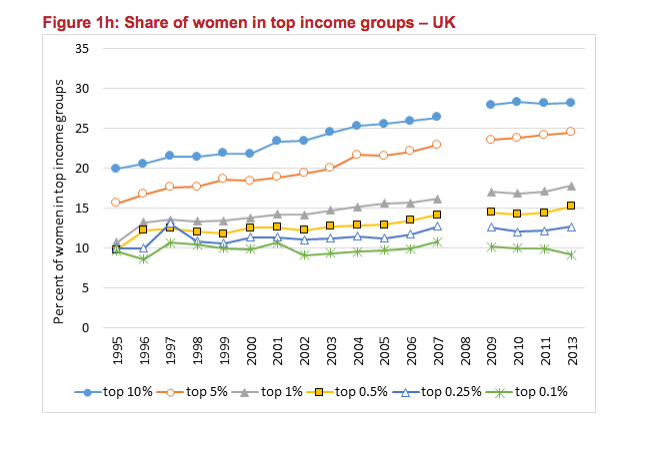Here's proof that women struggle to be as rich as men

Flickr / hehaden
Women make up a smaller and smaller fraction of those with high incomes, according to a new survey by the London School of Economics that looked at some of the most developed countries in the world.
The report used income tax data from eight countries since the 1980s to look at the gender composition of those with top incomes.
It used data from the UK, Spain, Denmark, Canada, New Zealand, Italy, Australia, and Norway, as these are countries where husbands and wives are taxed separately.
The United States was not included because income tax is levied on couples there, rather than on individuals.
The survey found that women have been increasing their representation in the top 10%, but there has been almost no progress at the top 0.1%, suggesting that there is a "glass ceiling" at the very highest income level across some OECD countries.
Of the 53,000 wealthiest people in the UK — the top 0.1% — only 9% are women. Women represent less than a third of those in the top 10% in all countries, and as few as 22% in Norway.
Here is the chart:

Flickr / hehaden
NB: The year denoted next to each country indicates the most recent year tax data was available for each country.
Here is a chart for the UK specifically:Flickr / hehaden

The proportions of women in the top 10% have been increasing in the UK. In the UK in 1995, 20% women made up the top 10%. That figure rose to 28.2% in 2013.
As the chart also shows, the proportion of UK women in the top 0.1% has actually decreased in the same period, from 9.6% in 1995 to 9.2% in 2013.
Alessandra Casarico, who co-authored the report, said that women "now make up more of the top income groups, but they still are a distinct minority and they become rarer the higher one climbs."
"Composition of income is important: In the old days, the rich were those with property; they have been replaced by CEOs and entrepreneurs, among whom women are not well represented," she added.
NOW WATCH: STIGLITZ: It makes me crazy that everyone gets this wrong about the economy
See Also:
SEE ALSO: Saatchi & Saatchi chairman Kevin Roberts thinks the gender diversity in advertising debate is 'over'

 Yahoo Finance
Yahoo Finance 
